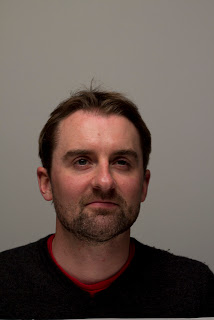Today was the first day of Studio Lighting with Lindi Heap.
Some notes from today's class are as follows:
- We are only dealing with a constant light source - NOT FLASH.
- The continuous light source will be TUNGSTEN.
- The idea is to understand light, work with it, manipulate it, shape it, and build it etc.
- It will all be focused around portrait lighting.
- Each class should prove very practical - not much theory :)
- Photographs from each class are to be blogged for assessing next class.
- Inspirational portrait images are encouraged to be brought to class or blogged. (perfect because i'm always collecting inspirational reference both analog and digital).
- Good idea to begin creating a list of possible MODELS for upcoming shoots.
- All WH&S rules and regulations must be followed at all times.
- Photographic equipment such as - CAMERA - TRIPOD - LIGHT METER - REFLECTOR and any possible props are encouraged at each class.
Types of TUNGSTEN lighting are - FILAMENT and HALOGEN. Both light sources produce a high level of heat. This can affect the comfort level of the model and can have an affect on the photographer when adjusting the position/angle of the light be hand - so keep this in mind if using such a light source as this.
Filament
 |
| Click for further information. |
Halogen
 |
| Click for more information. |
The following are a few TUNGSTEN studio light setups.
 |
| light with barn-doors. |
 |
| light with reflector-dish. |
 |
| light with soft-box. |
After a brief introductory power-point presentation on a few basic styles and important fundamentals of portrait lighting, we split into small groups and made a practical attempt at lighting each other with constant source TUNGSTEN lighting - with one light being harsh and the other being a soft-box.
Classic lighting styles - REMBRANDT and HOLLYWOOD
Rembrandt
One of the oldest ways and perhaps the first known lighting style for a portrait. It requires the light source to be positioned at a 45 degree angle from the subject horizontally and vertically. This casts light mainly across one side of the face and then just catches the second cheek and eye area of the face that is opposite the light source.
Hollywood
A style that rose to popularity through the early days of celebrities and Hollywood movies. It is quite a harsh and direct lighting style, but works well to hide flaws in the subject's appearance. It requires the light source to be positioned high and again at roughly a 45 degree angle to the subject, but instead of having it off to one side it is basically straight-on the subject above the camera/photographer. The subject raises their head toward the light slightly. Hollywood lighting gives off the trademark shadow under the subjects' nose.
Below are a few of my photographic examples of the two styles with Michael as my subject.
 |
| Rembrandt lighting. |
 |
| Rembrandt lighting. With added reflection to shadows. |
 |
| Hollywood lighting. |
 |
| Hollywood lighting. With added reflection to shadows. Much more flattering :) |
 |
| Michael working it for the camera. |
The following shots are just a few randoms from class.
 |
| Michael looking un-easy whilst being metered by Lindi and Bec. |
 |
| Joel paying full attention to Lindi's presentation. |
It was an enjoyable class and i think everyone in class learnt something new and achieved some good results with their photographs.
Looking forward to seeing what they captured in today's class and interested to see what inspiration everyone brings in next week.
Looking forward to seeing what they captured in today's class and interested to see what inspiration everyone brings in next week.
D.


No comments:
Post a Comment